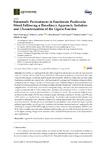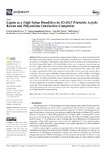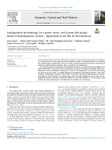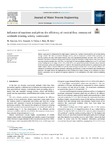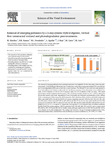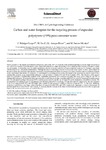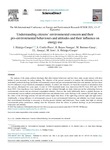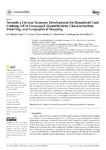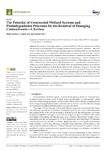Buscar
Mostrando ítems 1-10 de 16
Formosolv Pretreatment to Fractionate Paulownia Wood Following a Biorefinery Approach: Isolation and Characterization of the Lignin Fraction
(MDPI, 2020-08-17)
[Abstract] Paulownia is a rapid-growth tree with a high biomass production rate per year and low demand of water, which make it very suitable for intercropping systems, as it protects the crops from adverse climatic ...
Lignin as a high-value bioaditive in 3D-DLP printable acrylic resins and polyaniline conductive composite
(MDPI, 2022-10-04)
[Abstract]: With increasing environmental awareness, lignin will play a key role in the transition from the traditional materials industry towards sustainability and Industry 4.0, boosting the development of functional ...
Configuration Methodology for a Green Variety Reef System (AR group) Based on Hydrodynamic Criteria – Application to the Ría de Ares-Betanzos
(Elsevier, 2021-05-05)
[Abstract] For the evolution and development of artificial reefs to attain the expected results, hydrodynamics is emerging as a key factor that must be taken analyzed in detail. In particular, thanks to the hydrodynamics ...
Influence of Nutrients and pH on the Efficiency of Vertical Flow Constructed Wetlands Treating Winery Wastewater
(Elsevier, 2021-05-04)
[Abstract] Winery wastewater is characterized by high organic content, low nutrient content and low pH at least during vintage periods. The effect of nutrient shortage and low pH on constructed wetlands (CWs) operation was ...
Removal of Emerging Pollutants by a 3-Step System: Hybrid Digester, Vertical Flow Constructed Wetland and Photodegradation Post-treatments
(Elsevier, 2022-06-22)
[Abstract] The removal of emerging pollutants from municipal wastewater was studied for the first time using a three-step pilot-scale system: 1) hybrid digester (HD) as first step, 2) subsurface vertical flow constructed ...
Carbon and water footprint for the recycling process of expanded polystyrene (EPS) post-consumer waste
(Elsevier, 2022-03-08)
[Abstract] Plastic pollution of the natural environment is ubiquitous, and around 40% of all plastic waste produced globally is used in single-use products and only 9% is recycled. From this plastic waste, expandable ...
Quantification and mapping of domestic plastic waste using GIS/GPS approach at the city of Guayaquil
(Elsevier, 2022-03-08)
[Abstract] A significant contributor to the waste stream is the domestic single-use plastic used in households, being the final disposal in most cases the local landfill. There is a significant opportunity to promote ...
Understanding Citizens’ Environmental Concern and Their Pro-environmental Behaviours and Attitudes and Their Influence on Energy Use
(Elsevier, 2022-02-02)
[Abstract] The analysis of the prime political ideologies that affect human behaviours and how these make people interact with their habitat is most necessary for policy making. The objective of the present research is to ...
Towards a Circular Economy Development for Household Used Cooking Oil in Guayaquil: Quantification, Characterization, Modeling, and Geographical Mapping
(MDPI, 2022)
[Abstract] The objective of the present study was to quantify, geo-locate, model, and characterize domestic used cooking oil (dUCO) generation for the city of Guayaquil. For this reason, and as a prerequisite for the proper ...
The Potential of Constructed Wetland Systems and Photodegradation Processes for the Removal of Emerging Contaminants—A Review
(MDPI, 2022)
[Abstract] The presence of emerging organic contaminants (EOCs) in the environment is increasing and requires the development of technologies for their effective removal. Therefore, a literature review on the behavior of ...


